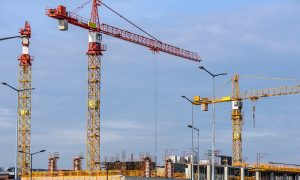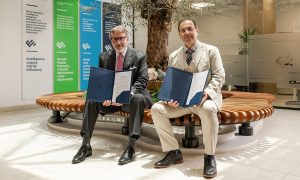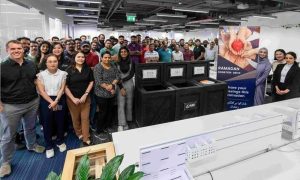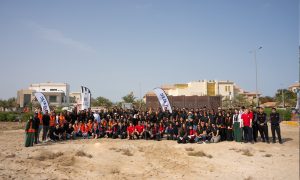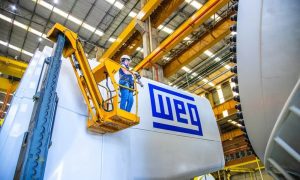Electro-World Cup
Christine Fashugba talks to Siemens One

Thomas Brodocz , vice president of corporate development with Siemens One, gives Christine Fashugba an insight into the technology behind the games
Following the controversy surrounding the Qatar bid team’s 2022 World Cup victory and the possibility of internal FIFA committee investigations, Qatar’s officials continue to forge ahead with the country’s infrastructural, hotel
and eco-friendly stadia development and construction, at an estimated cost of around US$55 billion.
Electronics are at the forefront of the preparations with 13 companies already having registered interest in the next phase of goal-line technology tests in a bid to ensure the game’s goals are genuine.
However, critics are more concerned about how the environmental issues attached to hosting the event in the desert
country will be addressed.
With Siemens having supplied building technology for fire safety, video surveillance and lighting to previous World Cups in Germany and South Africa, Thomas Brodocz, vice president corporate development for Siemens One International Projects, is keen to offer technical solutions for the next hosting country.
“As Qatar has a desert climate, a nonsustainable level of natural water resources and finite energy resources, the key success factors for a sustainable future and therefore important concepts for Qatar 2022, are sustainable solutions for
power generation and distribution, including concepts like renewable energy such as concentrated solar power plants, photo-voltaic, wind and smart grids for renewable integration, flexible tariffs and demand response incentives,” says Brodocz.
He highlights how the combination of state- of- the-art, long-lasting building material for architectural structures with infrastructural and energy solutions could be used for the development of Qatar’s stadium and confirms efficient water technology can incorporate the reuse of condensing chiller water and grey and black water separation as well as purification using bioreactor and nano filters.
Buildings can also become more sustainable with environmentally compatible chillers for district cooling, coupled with solar thermal power usage stadium emissions can be reduced to almost zero.
From a financial perspective Brodocz is keen to ensure each stadium does not become an “idle object” during the 340 days a year when it is not being used; believing prevention of this means multipurpose usage of the stadia and its
new applications and technologies in an attempt to attract and maintain high visitor numbers and secure a
high return on their investment.
“State-of-the-art venues are also key, as today’s fans are looking for more entertainment and information
at a big sporting event,” Brodocz says.
“In addition to this, venues need to not just be comfortable, but also iconic, as this creates the best conditions for the athletes to achieve top performances and thus they become emotionally attractive to the society,” he adds.
Sports venues are more structurally complex than commercially used buildings due to their requirements; including around 50 technical subsystems and about 80 interfaces.
Brodocz is convinced the full alignment of the stadia technical concepts and mechanisms will not only considerably impact investments but also operations and Qatar’s ecological footprint.
Having presented at the “Stadium Design and Development Summit 2011” in Qatar where Siemens demonstrated the latest technology, including lighting, building and safety solutions, Brodocz suggests how such electronics reflect an outlook for future social behaviour and the implications such changes will have on infrastructure and technology.
“For Siemens, sustainable solutions which involve advanced technology and change, the [social] behaviour are focus objectives.
“We believe technology and infrastructure systems are a key enabler for a sustainable society and can help to make required behavioural changes easier such as through automation and monitoring.”
“These technologies and solutions are so important for Qatar because they will contribute not only for the 2022 FIFA World Cup Qatar but beyond this event to a green and maybe even CO2 neutral state,” he concludes.

